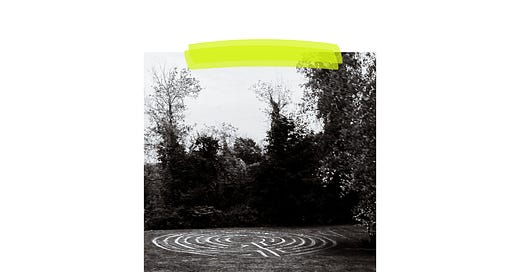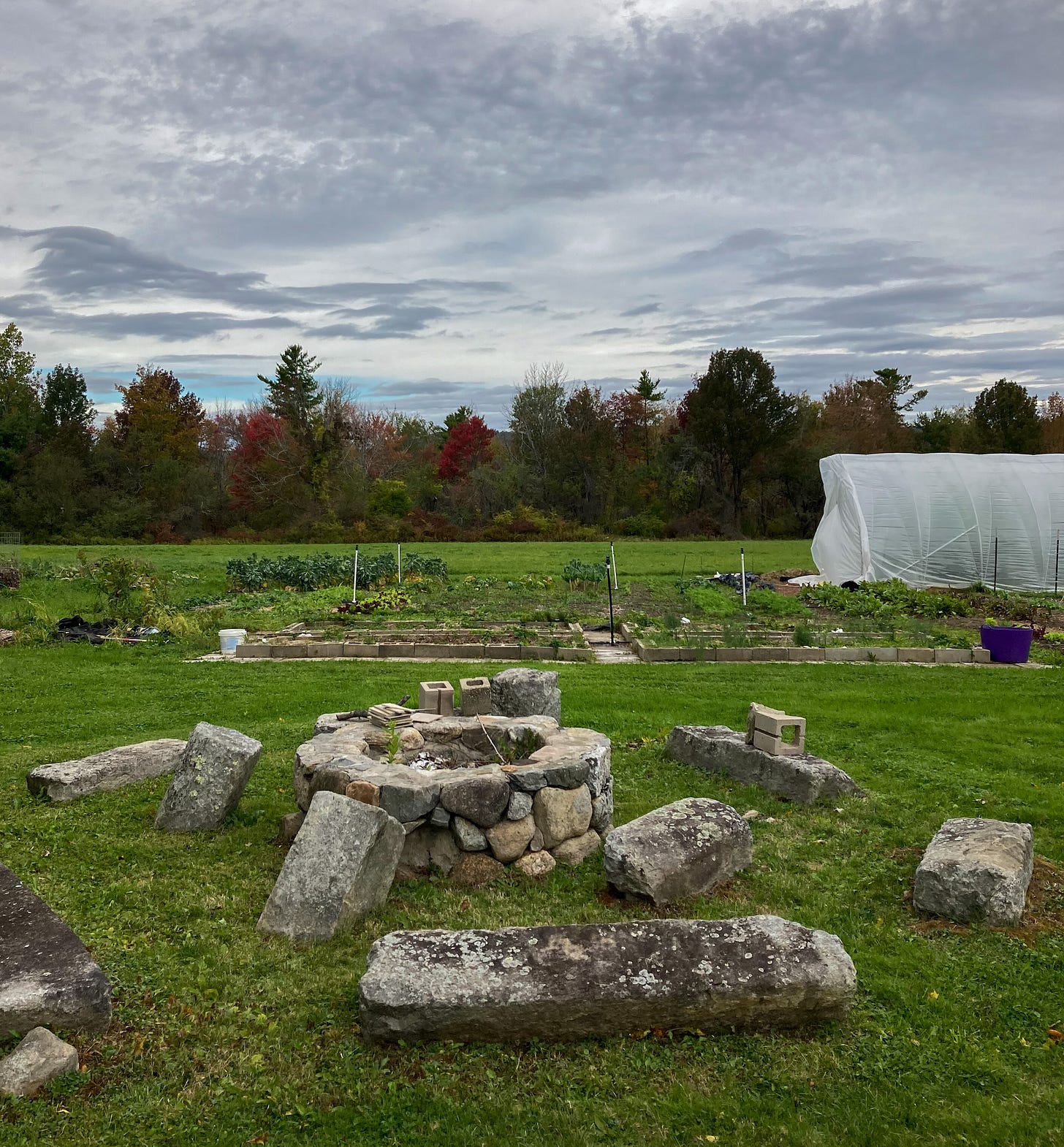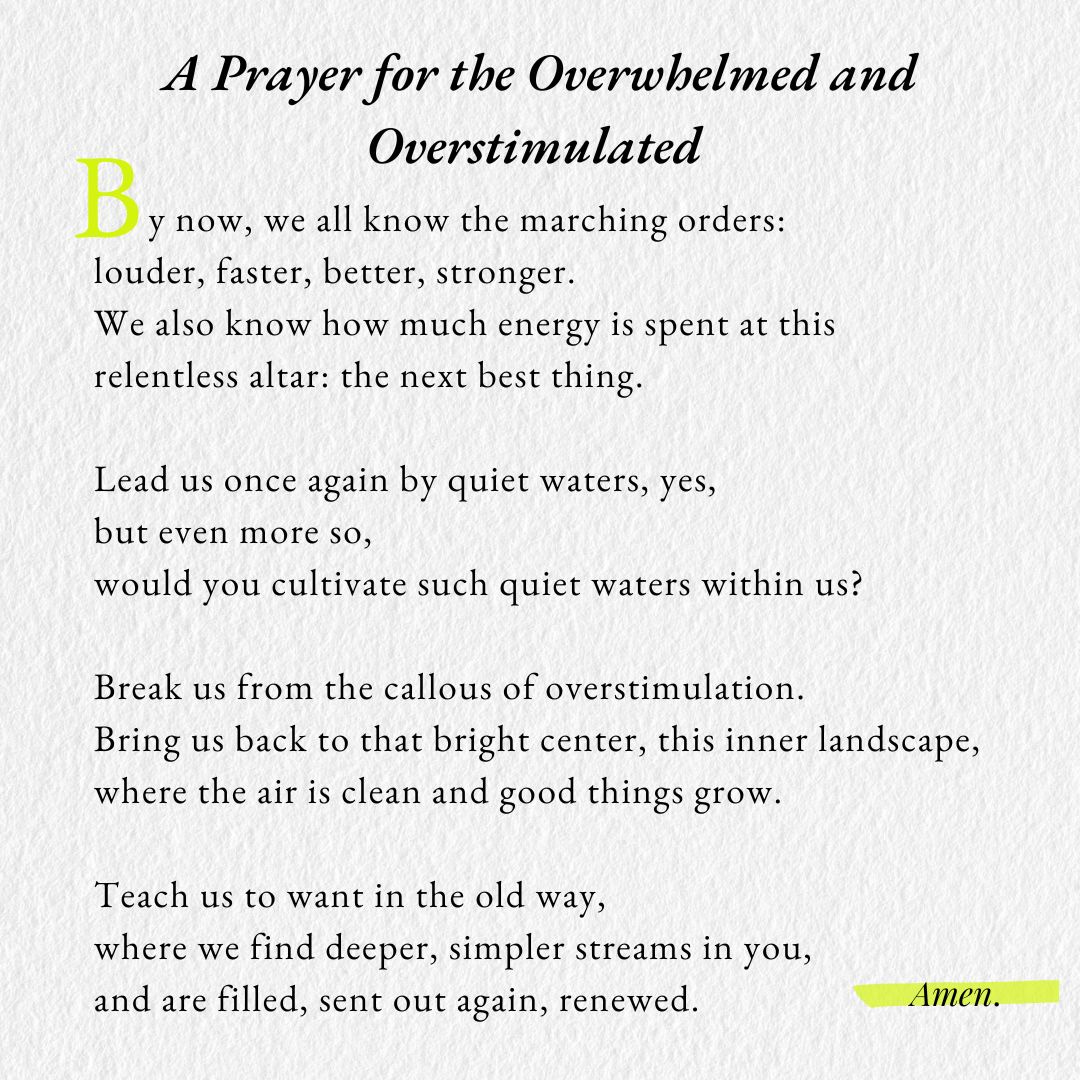SLANT LETTER: Madeleine L'Engle and Every Writer's "Circle of Quiet"
Reflections on my recent L'Engle writing retreat
You’re reading SLANT LETTER, a monthly letter designed for writers like you looking to deepen your craft and practice soul care in the creative life. Subscribe to get it straight from this editor’s desk to your inbox, plus my free guide to crafting your unique writing angle. Also writing on Instagram.
Teresa of Avila called it an interior castle.
The Celts called it a thin place.
And Madeleine L’Engle called it her circle of quiet.
She writes in the opening pages of A Circle of Quiet a confession that rings just as true for many of us 50 years later:
“Every so often I need OUT— away from all of these people I love most in the world — in order to regain a sense of proportion … My special place is a small brook in a green glade, a circle of quiet from which there is no visible sign of human beings … there I move slowly into a kind of peace that is indeed marvelous, ‘annihilating all that’s made to a green thought in a green shade.’”
I’m fresh back from a Madeleine L’Engle writers retreat in Connecticut, near her old farm at Crosswicks, where this very circle of quiet nourished a lifetime of creative work. I didn’t get to see the green glade itself (hunting season!) but would you just imagine the tales told around this firepit?
Madeleine’s circle of quiet is the space that brought us Meg Murray and Mrs. Whatsit, the science of tessering, the reimagining of Noah’s ark, and the many worlds of thought and characters she created through a lifetime canon of over 60 published books.
Just imagine the spaciousness of such an interior castle. How many rooms, flights, palisades can a green glade hold?
Creativity requires capacity. The ask of the imagination is nothing less than vast fields of inner space. And as most creatives know in a deeply personal way, such spaciousness can be difficult to come by.
Life is full. Full of deadlines and dashed expectations and push notifications and attempted-yet-failed-again multi-tasking. So very many things throw us into disproportion. A deep well is hard to cultivate these days.
So this is a hard truth: no one can protect and preserve a writer’s creative source but you. Madeleine knew what we would do well to hold close today: your “circle of quiet” is core to your creative life and it cannot be outsourced. No one else can get quiet for you. Somehow it is both daunting and empowering to know that we are the only ones who can set these terms.
At the retreat center, there was a prayer labyrinth. I’ve never walked one before, but I love anything that brings a spiritual practice into embodiment. Sophronia Scott, one of our teachers this weekend, was offering a guided prayer walk so a group of us headed down the hill from the house into an open glade.
It was dusk, and as Sophronia sent each of us into the circle with the ring of a bell, we went walking—tracing this ancient pattern, flagstones rimming the earth, leading us toward the center.
There are many ways to walk a labyrinth, as many as there are ways of praying, but the primary invitation to me is to be drawn in toward the center of things, before being sent back outward again.
We are so often preoccupied with the peripheral that we lose touch with the essential, the bright center of it all. This is why I love poetry so much: it gets to the guts of a thing, without preamble. Isn’t that the business of writers—naming the true, essential thing?
Perhaps a labyrinth is its own circle of quiet, able to usher us away from the peripheral, back to the essential.
There’s no prayer labyrinth near my house, not within miles. Nor do I have a brook-side green glade at the ready. But I don’t think a circle of quiet is meant to be experienced only in the most perfect conditions. Perhaps we can give ourselves permission to get out by way of a short lunch break walk, drinking our coffee and doing nothing else (a radical act these days), reading or journaling before bed, whatever you know is needed.
Like Madeleine, and like the labyrinth’s pattern itself, we will spend our lives moving in and out of creative focus and engagement with the world, of creating words and living a full life, and this is good. I hope you will give yourself the permission you need to “get out” sometimes, and that you’ll find such steady spaciousness there that you’ll be renewed to come back again—and again, and again, and again.
Until next time,
Take heart. Write on. You got this.
If you’ve found something that speaks to you here…
Please pass it on! This letter is this editor's off-hours labor of love. Your word of recommendation is how our little community grows.
P.S. // A Blessing for Writers
SLANT LETTER is about both craft + soul care for the creative life. So for each issue, I want to speak this blessing for all of us anxious, ambitious, internet-exhausted writing folk.










"No one else can get quiet for you. Somehow it is both daunting and empowering to know that we are the only ones who can set these terms." // YES and AMEN. Thank you for this good, good reminder ❤️
I was doing a writing prompt this morning about an experience of feeling truly alive and I realized that what led to it was first of all speaking for myself and stating my desperate need for quite alone time. "No one else can get quiet for you. Somehow it is both daunting and empowering to know that we are the only ones who can set these terms."— so true! My claiming that space led to rest that rejuvenated me into feeling more alive and empowered. I’m going to pull out my old copy of Circle of Quiet and revisit it… it is the powerful missing ingredient in creativity…. A negative space that changes everything. … hhmmm. I just released a podcast episode on the importance of rest for creativity: having an inhale before the exhale of creative expression… interesting to think about how an inhale is creating a vacuum… I’m off to over think about this. In a quiet place ;-)